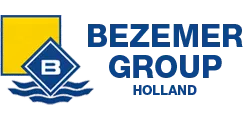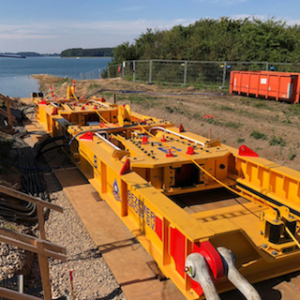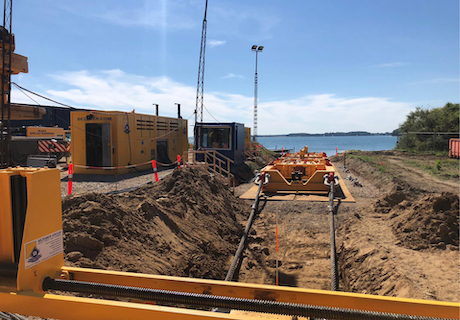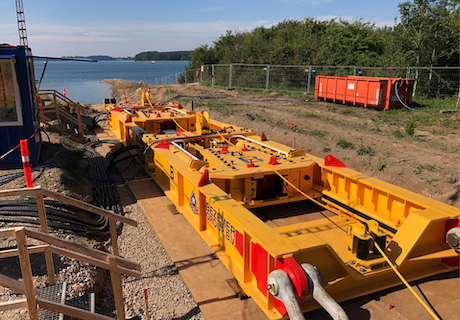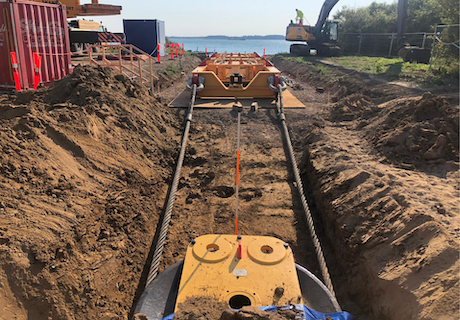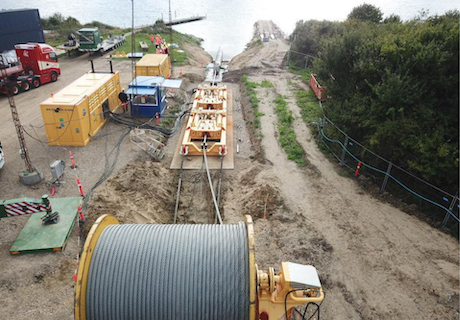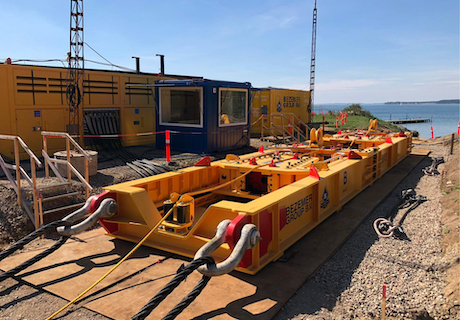Baltic Pipe Lillebaelt Crossing Denmark
500 ton linear winch KTC 500
Used Products in this project
Baltic Pipe Lillebaelt Crossing Denmark
500 ton linear winch KTC 500
Project description
The Baltic Pipe – Lillebælt (Little Belt) Crossing, also known as the Fænø Project forms part of the overall Baltic Pipe project and includes the fabrication and installation of a 4 km offshore gas-pipeline passing south of the island Fænø. The purpose of the Lillebælt Crossing was to connect the onshore pipelines on Jutland, Denmark’s mainland, and Funen. Bezemer Dordrecht was awarded the job of providing a winch to complete the pipe pull as well as engineering and producing an underwater sheave to overcome some of the challenges of this project.
Crossing a 4km strait using a Linear Winch
For this project, Bezemer supplied the KTC 500. This winch was installed to pull the wire across the seabed. The KTC 500 is a 500-tonne continuous linear winch. The winch was supplied with 4200-meter, 128-millimetre steel wire rope to pull the pipe all the way across. This 4 km pipeline was prepared by Boskalis, at the stringing yard on one side of the strait.
Engineering an underwater detachable sheave block
The pipe pull required tackling a unique challenge – the curvature of the pipeline installation route due to misalignment of the landfalls on the two sides of the Little Belt. This curvature was required due to the position of the island of Fænø, in the middle of the strait.
To overcome this challenge, Boskalis, conceptualized and fabricated custom guide piles. These guide piles were instrumental in achieving the necessary bend in the pipeline route. The missing puzzle piece in this approach was the Underwater Detachable Sheave Block, designed by Bezemer to guide the pipeline around the piles. This one-of-a-kind sheave featured a surface-operated remote release system, driven by hydraulic cylinders. Usage of this sheave allowed to pull the pull wire at a curvature: The sheave was placed on an anchor pile accros the guide piles. As the pullhead of the pipeline reached the sheave, activation of this cutting-edge sheave ensured the release of the pulling wire and allowed the positioning of the curved pipeline along the guide piles.
Powerful collaboration and proven technology
Bezemer Dordrecht’s Underwater Sheave Block, combined with the power of the KTC 500 linear winch and the help of the Boskalis project engineers did not only result in a gas pipeline installation. It also showed how powerful collaboration and proven technology can result in successful projects, and allowed for a great pipe pull in the Little Belt.
